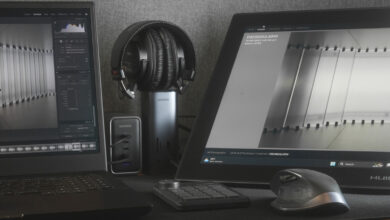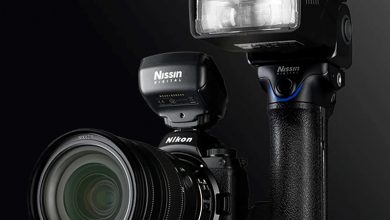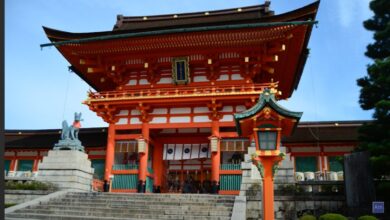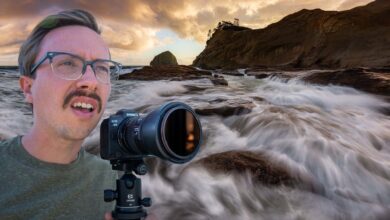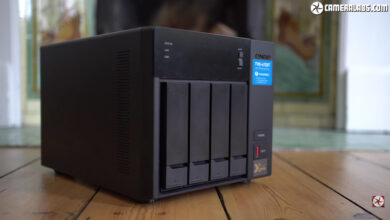Camera Settings to Keep in Mind When Shooting Sharp Motion in the Studio
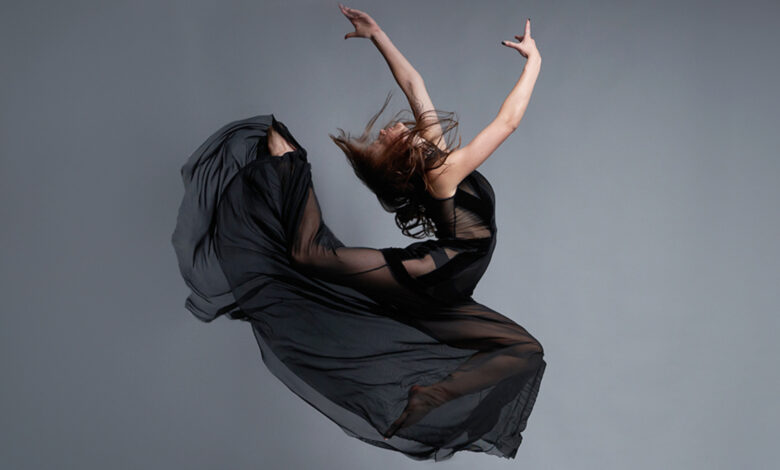
Here are some helpful tips on camera settings that you should use to capture clear motion in the studio. I made a detailed video but here is a breakdown of the settings you need to understand to keep the image sharp.
1. Choose the Right Shutter Speed: Learn about Sync Speeds
Sync speed is the fastest shutter speed your camera can use and stays in sync with the flash. In most modern cameras it is 1/200 second or 1/250 second. There’s also flash that has something called high-speed sync. High-speed sync allows the camera to increase the maximum shutter speed, but consumes significant energy.
Look at the following pictures. The photo on the left was taken at f/8, 1/250 sec, ISO 100. The photo on the right was taken at f/8, 1/320 sec, ISO 100.

The difference between the two images is a fraction of a stop of light on the shutter speed setting, but the result is about three stops below the exposure of the left image. That’s because with the image on the right, the camera has exceeded its maximum sync speed and it forces the flash into high-speed sync. The flash still fires, but at a significantly lower power, although the flash settings remain the same. The bottom line is that high speed sync causes a huge power drop in your lights.
When shooting sharp motion in the studio, there’s no reason to force your flash into high-speed sync. Keep your shutter speed at or just below the maximum sync speed for your camera.
2. Choosing the Right Aperture: Understanding Depth of Field
The next thing you need to consider is how much of the image you need to focus on. When you shoot a subject and their eyes are in focus, but the focus becomes blurred as you move behind the ear, that’s because you have a very shallow depth of field. Depth of field is the plane of focus that is controlled primarily by your aperture and distance from the subject. Things that are in the depth of field will be in focus, while things in front or behind that plane will be out of focus. The wider the aperture and the closer you are to the subject, the narrower the depth of field. If the eyes are in focus and the ears start to blur, then you can increase the aperture or move further away from the subject and you will see an increase in the depth of field.
When shooting motion, you may need a wider depth of field. Imagine shooting a dancer in motion with one arm or leg outstretched or a model in a floral dress. It is always wrong to have a wider depth of field when capturing sharp motion.
3. Eliminate ambient light
When you take a photo in the studio and capture sharp motion, the first thing you want to do is remove all ambient light with your camera settings. You want to make sure that the light hitting your subject is intentional light you’re controlling, not flat light from above. You don’t have to turn off the overhead lights or model lights. You just need to position your cameras so that they are not relevant. Start with a shutter speed of 1/250 or whatever your maximum sync speed is. Set your aperture to f/8 and your ISO to 100. Take a photo with those settings and turn off the flash. Your frame should be completely black. If it’s not completely black, you can adjust your aperture until it’s completely black, but don’t change the shutter speed higher than your sync speed.
4. The Most Important Factor – Understanding Flash Duration
The goal is to expose the camera’s sensor to light for the shortest time possible. That’s what sharp motion capture is. With camera settings that exclude ambient light and shutter speeds at or below maximum sync speed, flash duration is the key number that will determine the sharpness of your images.
Imagine you are in a completely dark room. It’s so dark that it doesn’t matter whether your eyes are open or not; Either way, you’re in total darkness. Now, imagine a light coming on in a room for 1/100th of a second with your eyes open. Your eyes may open for 10 seconds or may open for half a second. It doesn’t affect how long your retinas are illuminated, as long as they open when that beam of light hits it. That’s how flash duration works: the amount of time your eyes are open is the shutter speed, and the time it takes to turn the light on and off is the flash duration. The flash duration renders your shutter speed irrelevant as long as it’s lower than the sync speed and you’ve removed all ambient light with your other settings.
Look at the two images below. Painted images were taken with the strobe light and shutter speed was set to the camera’s maximum sync speed, 1/250 sec. In the photo on the right, the camera is set to 1/2000 of a second, and even though the shutter speed is eight times faster, the rain still isn’t as sharp as the paint. The reason is that with strobe lights, movement is stopped by flash duration instead of shutter speed. In the canvas, the flash duration is about 1/4000 of a second. So even with lower shutter speeds, the sensor is illuminated for a much shorter time, resulting in sharper images.

The studio flash emits an intense amount of light very quickly. It seems instantaneous, but what really happens is that the flash increases in brightness from 0 to 100% and then drops to 0%. That flash duration is measured in numbers t.5 or t.1. Here is a chart that Lee Morris put together when Compare Godox and Profoto lamps:

T.5 measures how long the flash takes to go from 0% to 100% and then down to 50%. The number t.1 measures the speed of light going from 0 then up to 100% and then down to 10% of light. The number t.1 is a much more accurate reading for measuring the amount of time the camera’s sensor is illuminated by light from the flash.
The flash duration varies with the light’s power setting. If you are shooting a Godox AD600Pro at max, t.1 flash duration is 1/220s. At the lowest setting, flash duration is much faster at 1/10,100 second. One Profile B1 (lamps are less powerful and three times more expensive) is 1/377 sec at full power and 1/6,010 sec at the lowest setting. This is why it is important to have a strong flash. 600 watt second strobe lampshade at half power and 300 watt second strobe lampshade at full power will give you the same amount of light output, but the closer the lamp is to operating at full power, the longer it will last. flash slower.
If you can understand these principles, you won’t need to guess when choosing the correct camera settings to capture sharp motion. Let me know if you have any questions in the comments section.
